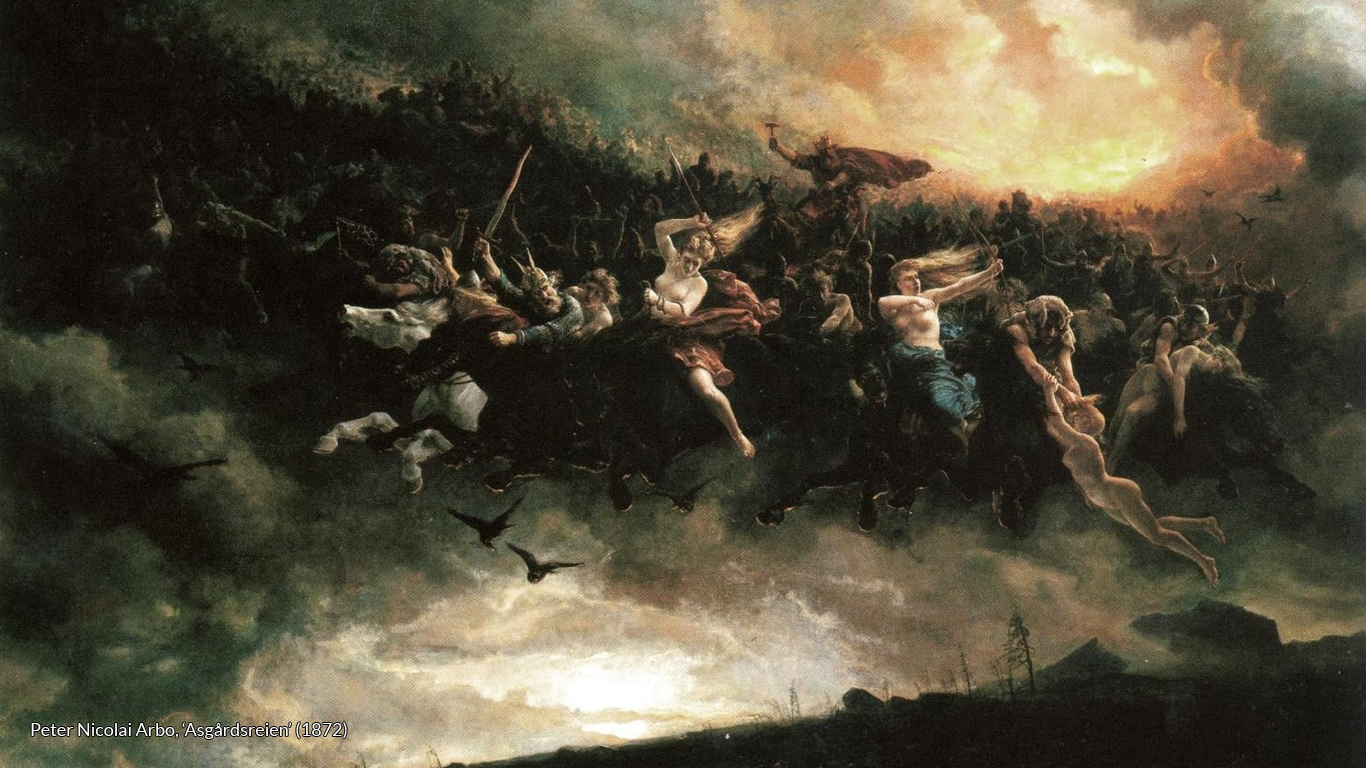Robin Hood is known by everyone as the English outlaw hero, dashing through the greenwood with his band of merry men to rob from the rich and give to the poor, before feasting on poached deer under the stars. But he is also an unknowable cultural fantasy, whose meaning morphs as the ages pass, each generation adding to and adapting his story for their own time. This article offers a brief look at the early, medieval Robin Hood of carnival festivities and ballads, in which there is no King Richard or Prince John, and Robin is not a displaced aristocrat but a lowly yeoman trickster who does not hesitate to kill.
Robin Hood’s medieval origins are shrouded in mystery. There are countless attempts to find a ‘real Robin Hood’, throwing up an array of interesting historical candidates, even if most of them died hundreds of years before the earliest surviving mentions of Robin Hood. It is possible that Robin Hood tales were influenced by legends growing around such historical figures but it seems more likely that Robin was always a fictional hero born in folkloric stories. The earliest surviving Robin Hood stories lived alongside and were shaped by fellow medieval tales, such as the folkloric ‘King and Commoner’ stories (disguised kings encountering unruly poaching commoners in the forest), other medieval outlaw tales (e.g. Hereward, Eustache the Monk, and Fouke le Fitz Waryn), and possibly French pastourelles celebrating Robin and Marion, the shepherd lovers.
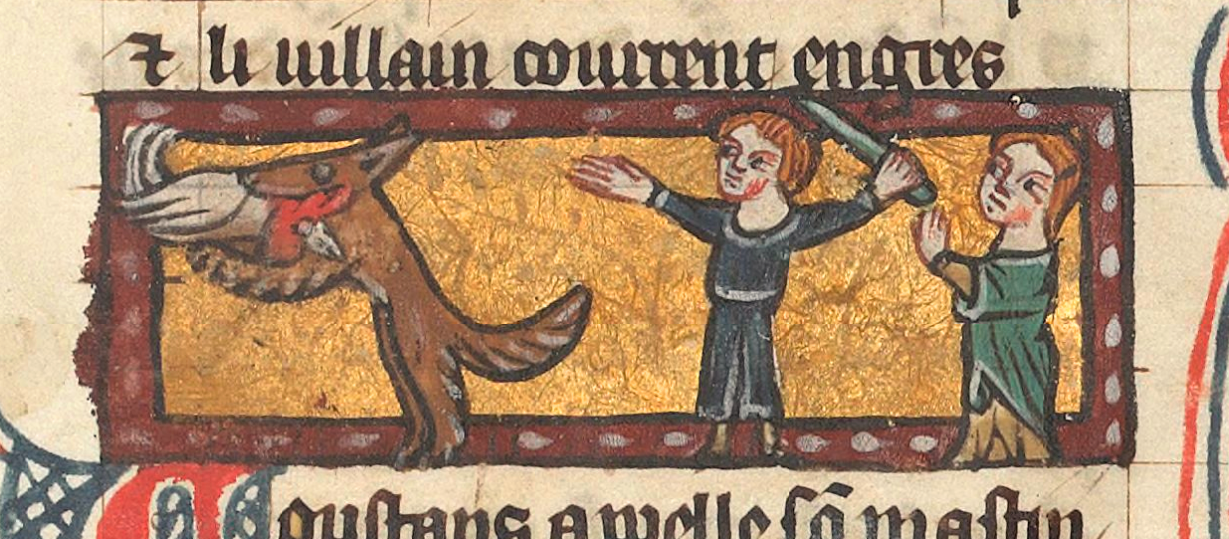
One of Robin Hood’s earliest appearances can be seen in the medieval folk carnival, in which a Robin Hood figure often fulfilled the role of the ‘summer lord’ or ‘lord of misrule’, elected to oversee the festivities amid a celebration of the spring or summer. The lord of misrule would dress up as Robin Hood, raising money for the community by exchanging livery badges for fees, whether handed over willingly or not.[1] Such festivities could also include a carnal mock-friar or priest and a queen or cross-dressing man-woman, who may have fed or morphed into the characters of Friar Tuck and Maid Marion. A short carnival folk play (Robin Hood and the Friar) certainly features Robin Hood giving such a ‘maiden’ to ‘Fryer Tucke’, who delightedly straps on ‘an huckle duckle’ (a wooden phallus) that rises ‘an inch above the buckle’ and provocatively dances with the man-woman ‘in the myre’. Here, Robin appears to be taking part in a celebration of fertility and sex amid the inversion of a friar’s spiritual role. This was very much an aspect of the medieval carnival, which often turned the world upside down in a celebration of the low, focusing on food, sex, and bodily waste: on cycles of life and death.[2] Given this folk role, it is not surprising that there have been attempts to link the medieval Robin Hood with the folkloric Green Man, also often associated with spring and rebirth.[3] Robin is after all a mysterious and unruly forest-dwelling ‘wild man’, bedecked in green and tied to the natural world. However, judging from the surviving records of such festivities, it should be emphasised that Robin’s appearance in the carnival seems to be a late medieval development (correlating with the late medieval appearance of Robin Hood tales), rather than part of any more ancient or ‘pagan’ ties to the Green Man.
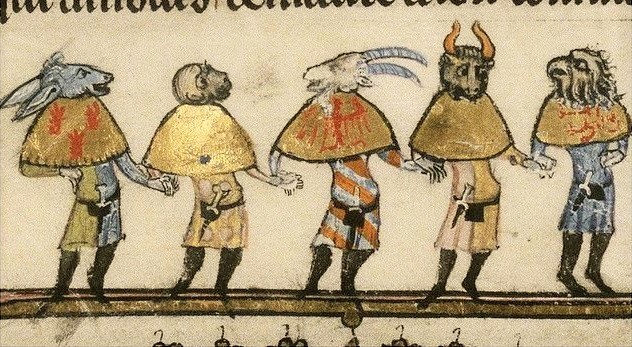
To glimpse what Robin Hood meant to his medieval audience, the best place to look are the surviving fifteenth-century ballads. Here, Robin is frequently shown to be a yeoman forest trickster who toys with social rules or subverts authority, in the process righting injustice and exposing untrustworthy authority figures (especially those involved in law enforcement or the church).
In Robin Hood and the Monk (c. 1450), Robin quarrels with Little John before heading alone into Nottingham to take Mass at Saint Mary’s Church. A monk recognises his foe Robin and rushes off to fetch the sheriff, who gathers his men and storms the church, taking Robin prisoner. Hearing of Robin’s capture, Little John forms a rescue party with Much the miller’s son and intercepts the monk and a page, who are riding to the (unnamed) king with news of Robin’s arrest. Little John and Much pull them down and cut off their heads, then ride to court in the monk’s place, receiving a royal warrant to bring Robin before the king. Returning to Nottingham, they present the king’s warrant to the sheriff, who offers them his finest wine and falls into a drunken slumber. That night, Little John and Much stab the jailer and break Robin out of prison. Returning to Sherwood Forest, Robin offers John the leadership of their band but John declines. The tale ends with the enraged king learning of the deception and half-admiringly complaining of Little John’s faithfulness to Robin.
In this tale, Robin emerges as a figure with a pious love of the Virgin Mary, which is set against the monk’s own more earthly concerns with revenge, causing the monk to violate the sanctity and sanctuary of his own church (and so deserve his execution). The close and for the period unusually democratic bonds between Robin and his band are emphasised, with Robin leading by permission. It is also a tale filled with infiltration and bloody violence, in Stephen Knight’s words, resisting the official world of ‘laws, coins, [and] official appointments [that] all threaten to enmesh the outlaws’.[4]
Robin Hood and the Potter (c. 1468) opens with Robin fighting a local potter for a bet. Robin is beaten, pays the bet, and proposes that he and the potter swap clothes for the day. The potter agrees and Robin heads into Nottingham to sell the potter’s goods. Having priced his pots far too low, Robin quickly sells out and gives the last five to the sheriff’s wife for free. She is delighted and invites the disguised Robin to join them for dinner, where he learns of an archery tournament. Robin takes part and wins, claiming the prize money. He then tells the sheriff that he can lead him to Robin Hood. The next day Robin takes the sheriff into the forest, blows his horn, and reveals his true identity as the outlaws arrive. They take the humiliated sheriff’s gold and send him back to Nottingham. Arriving home, the sheriff bewails his misfortune but his wife laughs, saying that he has now paid for the pots Robin gave her. Back in the forest, Robin gives the potter the money he gained, which comes to much more than the pots were originally worth.
Robin is very much a trickster in this tale, purposefully misunderstanding trade and subverting economic order but emerging with more money as a result.[5] It is also another tale full of infiltration, mocking an official authority that aims to constrain. More unusually, there is a subtle running romance between Robin and the sheriff’s wife here, with Robin repeatedly giving her gifts, including a white palfrey and gold ring. While the tale does not explicitly show a sexual affair, there is a sense that the virile Robin is adopting the role of a lover.
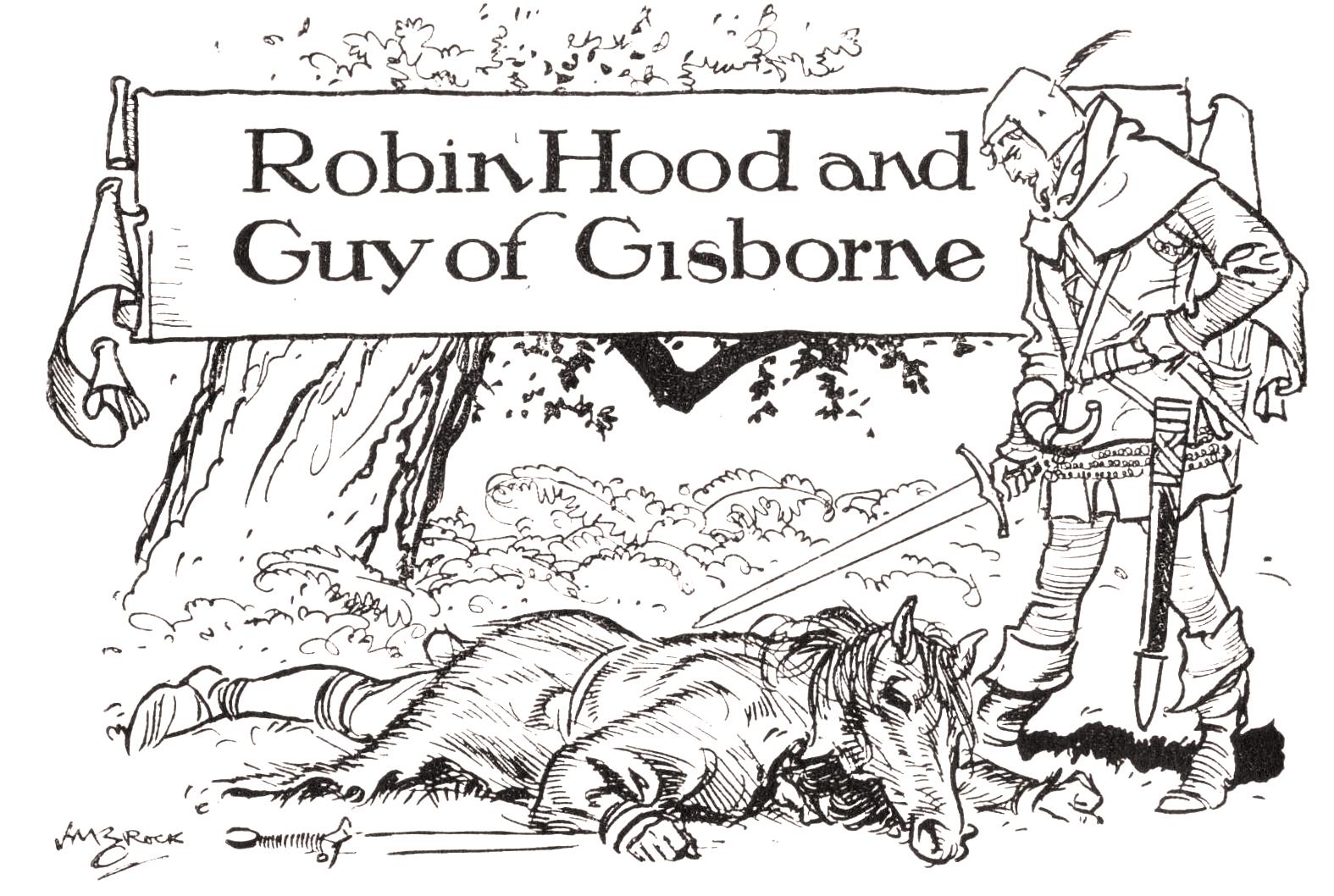
An eerier ballad can be found in the possibly medieval Robin Hood and Guy of Gisborne (c. C15th).[6] This tale opens in the greenwood, with Robin telling Little John of a dream in which he was beaten, bound, and stripped of his bow. They immediately come across a man leaning against a tree with a sword and dagger, dressed in a full horse-hide, from head and mane to tail. Little John urges Robin to stay back, which causes them to quarrel and Little John to angrily ride back to Barnsdale Forest. There, Little John finds two of their band slain and the sheriff of Nottingham pursuing Scarlet. John quickly pulls out his bow and manages to kill some of the sheriff’s men but is soon captured and bound to a tree. Meanwhile, Robin learns that the man dressed in a horse-hide is called Sir Guy and has been hired by the sheriff to kill Robin. They shoot at targets and Robin wins, declaring that he is ‘Robin Hood of Barnesdale’. They immediately begin to fight. Robin falls, tripped by a tree root, but after a quick prayer leaps up and kills Guy with a backhanded stroke. Robin calls Guy a traitor and decapitates his corpse, sticking his severed head on an arrow and defacing it with a knife. Dressing in Guy’s horse-hide, Robin takes Guy’s head to Barnsdale and finds the sheriff. Pretending to be Guy, Robin uses the mutilated head to claim he has killed Robin and asks to also kill Little John for his reward. The sheriff agrees, letting Robin approach the tree Little John is bound to. Robin cuts Little John loose and hands him Guy’s bow. The sheriff starts to run but Little John shoots him through the heart.
This violent tale seems rich in folkloric symbolism, especially around Guy’s horse-hide, with the bestial and human, hunter and hunted becoming blurred, as we seem drawn into Robin’s initial night-mare of emasculation.[7] The descriptions of Robin and Guy’s encounter also repeatedly establish an uncanny sense of doubling, with both speaking similar lines and mirroring each other’s actions before Robin seems to symbolically skin and wear Guy’s hide. It is almost as though Guy were Robin’s doppelgänger, his evil double, bought by the official world and traitorously hidden under the guise of the natural world.
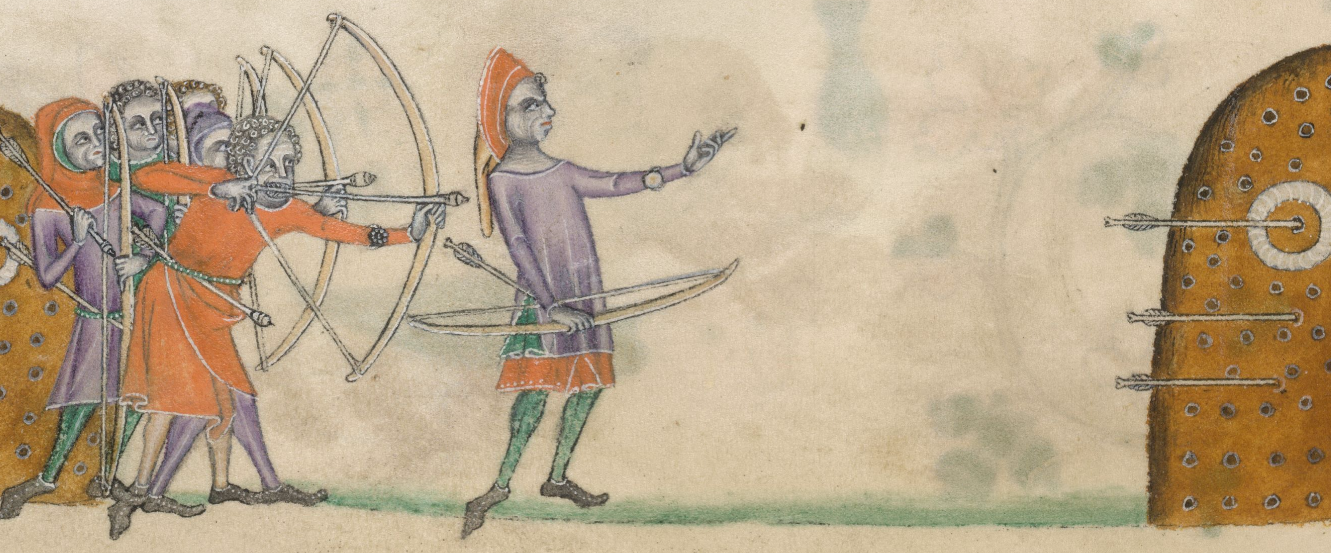
Finally, the longest of the fifteenth-century Robin Hood tales is A Gest of Robin Hood (c. 1495). Printed towards the end of the century, it appears to be a compilation or reworking of several previous tales. It opens with Robin encountering an impoverished knight, Sir Richard at the Lee, whose lands and wealth are forfeit to the abbot of St Mary’s. Robin lends Sir Richard the £400 to gain his lands back, much to the irritation of the greedy abbot and corrupt high justice. Little John travels with Sir Richard and wins an archery contest. The Sheriff of Nottingham, impressed by Little John’s skills, hires him. John, aided by the sheriff’s cook, steals the sheriff’s silver plate and gold, taking them back to Robin Hood. John then lures the sheriff into the forest, where the sheriff is taken by the outlaws and given a feast presented on his own silverware. The sheriff is eventually released, having promised to no longer pursue the outlaws. John, Scarlock and Much then capture monks from St Mary’s, robbing them of £800. Sir Richard arrives to repay the £400 he owes Robin, but Robin refuses it, claiming that the Virgin Mary has already sent him money to repay the loan, and instead gives Sir Richard another £400. The sheriff arranges an archery competition to which all the outlaws go. Robin wins the golden arrow and the sheriff, breaking his previous vow, attempts to seize him. The outlaws escape but John is badly injured and they hide in Sir Richard’s castle. The sheriff responds by ambushing Sir Richard, taking him prisoner. The outlaws storm Nottingham, Robin shoots the sheriff dead in the street, the outlaws kill the rest of the sheriff’s men, and Sir Richard is rescued. King Edward then arrives in Nottingham and is enraged to discover Robin has poached all his deer. The king disguises himself as a monk, heads into Sherwood and encounters Robin Hood. Robin presents Edward with a feast of poached deer and puts on an archery contest, in which anyone who misses is struck, during which Edward’s true identity is revealed. Edward promises to pardon Robin if Robin will return with him to court. Robin agrees, dresses the king in a green livery, and strikes the king all the way back to Nottingham. Robin then loses all his money in the court and eventually flees back to the forest. However, once there, he is betrayed by the prioress of ‘Kyrkely’ and her lover Sir ‘Roger of Donkesly’ who kill him by letting him bleed to death.
The Gest appears to be a more socially elevated tale with Robin rubbing shoulders with knights and kings and often remaining static in his woodland court, while others go on adventures or come to him.[8] In this way it perhaps prefigures Robin’s social elevation to a disinherited aristocrat in Anthony Munday’s influential late sixteenth-century play, The Downfall of Robert Earl of Huntingdon (a play that also followed John Major’s sixteenth-century chronicle history in moving Robin Hood to the time of Richard the Lionheart, allowing Robin to fight the false Prince John for the true King Richard, making him less problematic). But at the same time, the Gest is a tale that encapsulates all that has gone before in the medieval tradition. Legal and religious officials are portrayed as unjust and untrustworthy, subverting the social fabric, transforming Robin’s own illegal actions into moments that restore a natural justice, while vindicating Robin’s occasional executions of those who commit violence against his men or break their word. On the whole, these tales are playful, with a trickster Robin Hood merrily toying with social expectations, turning the world upside down from his liminal, carnivalesque forest kingdom so that it can be seen anew.
Recommended Books from #FolkloreThursday
References
[1] David Wiles, The Early Plays of Robin Hood (Cambridge: D. S. Brewer, 1981), pp. 7-30.
[2] This is most famously, if controversially, described in Mikhail Bakhtin, Rabelais and His World, trans. Hélène Iswolsky (Bloomington: Indiana University Press, 1984).
[3] Lorraine Kochanske Stock, ‘Lords of the Wildwood: The Wild Man, the Green Man, and Robin Hood’, in Robin Hood in Popular Culture: Violence, Transgression, And Justice, ed. Thomas Hahn (Cambridge: D. S. Brewer, 2000), pp. 239-250.
[4] Stephen Knight, Robin Hood: A Complete Study of the English Outlaw (Oxford: Blackwell, 1994), p. 54.
[5] This may hint at its mercantile readership. See Thomas Ohlgren, Robin Hood: The Early Poems, 1465-1560, Texts, Contexts, and Ideology (Newark: University of Delaware Press, 2007), pp. 68-97.
[6] While it only survives from Thomas Percy’s seventeenth-century manuscript, it bears some relation to a fifteenth-century Robin Hood play fragment and is generally regarded as having medieval roots.
[7] Stuart Kane, ‘Horseplay: Robin Hood, Guy of Gisborne, and the Neg(oti)ation of the Bestial’, in Robin Hood in Popular Culture: Violence, Transgression, And Justice, ed. Thomas Hahn (Cambridge: D. S. Brewer, 2000), pp. 101-110.
[8] Stephen Knight, Reading Robin Hood: Content, Form and Reception in the Outlaw Myth (Manchester: Manchester University Press, 2015), pp. 55-82.
Further Reading
A Gest of Robyn Hode, in Robin Hood and Other Outlaw Tales, ed. Stephen Knight and Thomas Ohlgren (Kalamazoo: Medieval Institute Publications, 2000), pp. 80-168
Antony Munday, The Downfall of Robert, Earle of Huntingdon, in Robin Hood and Other Outlaw Tales, ed. Stephen Knight and Thomas Ohlgren (Kalamazoo: Medieval Institute Publications, 2000), pp. 303-401.
Robin Hood and Guy of Gisborne, in Robin Hood and Other Outlaw Tales, ed. Stephen Knight and Thomas Ohlgren (Kalamazoo: Medieval Institute Publications, 2000), pp. 169-183
Robin Hood and the Friar, in Robin Hood and Other Outlaw Tales, ed. Stephen Knight and Thomas Ohlgren (Kalamazoo: Medieval Institute Publications, 2000), pp. 281-290
Robin Hood and the Monk, in Robin Hood and Other Outlaw Tales, ed. Stephen Knight and Thomas Ohlgren (Kalamazoo: Medieval Institute Publications, 2000), pp. 31-56
Robin Hood and the Potter, in Robin Hood and Other Outlaw Tales, ed. Stephen Knight and Thomas Ohlgren (Kalamazoo: Medieval Institute Publications, 2000), pp. 57-79
Mikhail Bakhtin, Rabelais and His World, trans. Hélène Iswolsky (Bloomington: Indiana University Press, 1984)
Stuart Kane, ‘Horseplay: Robin Hood, Guy of Gisborne, and the Neg(oti)ation of the Bestial’, in Robin Hood in Popular Culture: Violence, Transgression, And Justice, ed. Thomas Hahn (Cambridge: D. S. Brewer, 2000), pp. 101-110
Stephen Knight, Reading Robin Hood: Content, Form and Reception in the Outlaw Myth (Manchester: Manchester University Press, 2015)
Stephen Knight, Robin Hood: A Complete Study of the English Outlaw (Oxford: Blackwell, 1994)
Lorraine Kochanske Stock, ‘Lords of the Wildwood: The Wild Man, the Green Man, and Robin Hood’, in Robin Hood in Popular Culture: Violence, Transgression, And Justice, ed. Thomas Hahn (Cambridge: D. S. Brewer, 2000), pp. 239-250
Thomas Ohlgren, Robin Hood: The Early Poems, 1465-1560, Texts, Contexts, and Ideology (Newark: University of Delaware Press, 2007)
David Wiles, The Early Plays of Robin Hood (Cambridge: D. S. Brewer, 1981)







